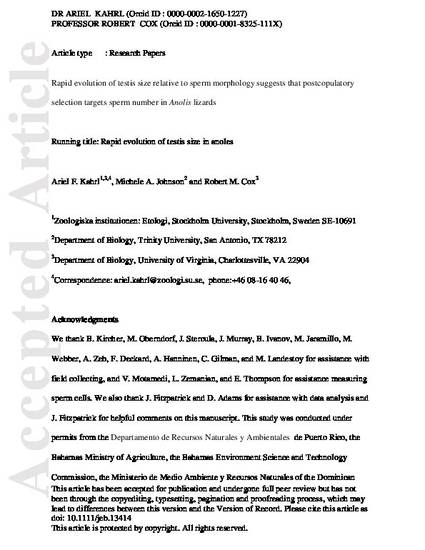
- Biology and
- Life Sciences
Post-copulatory sexual selection is thought to be responsible for much of the extraordinary diversity in sperm morphology across metazoans. However, the extent to which post-copulatory selection targets sperm morphology versus sperm production is generally unknown. To address this issue, we simultaneously characterized the evolution of sperm morphology (length of the sperm head, midpiece and flagellum) and testis size (a proxy for sperm production) across 26 species of Anolis lizards, a group in which sperm competition is likely. We found that the length of the sperm midpiece has evolved 2–3 times faster than that of the sperm head or flagellum, suggesting that midpiece size may be the most important aspect of sperm morphology with respect to post-copulatory sexual selection. However, testis size has evolved faster than any aspect of sperm morphology or body size, supporting the hypothesis that post-copulatory sexual selection acts more strongly upon sperm production than upon sperm morphology. Likewise, evolutionary increases in testis size, which typically indicate increased sperm competition, are not associated with predictable changes in sperm morphology, suggesting that any effects of post-copulatory selection on sperm morphology are either weak or variable in direction across anoles. Collectively, our results suggest that sperm production is the primary target of post-copulatory sexual selection in this lineage.
